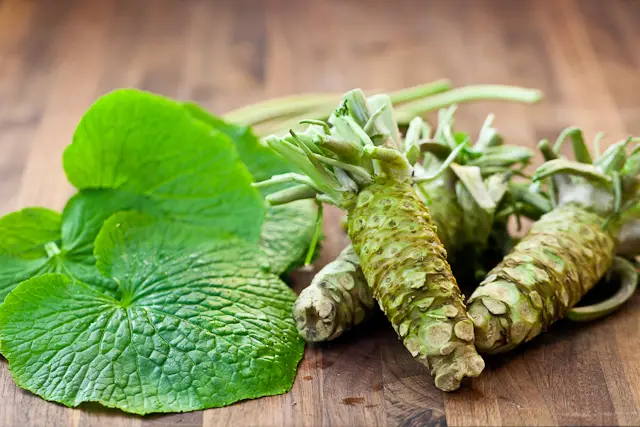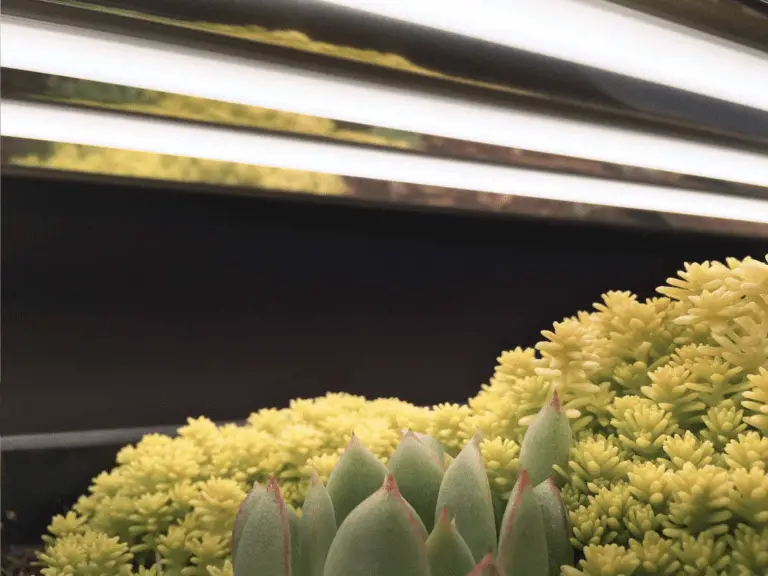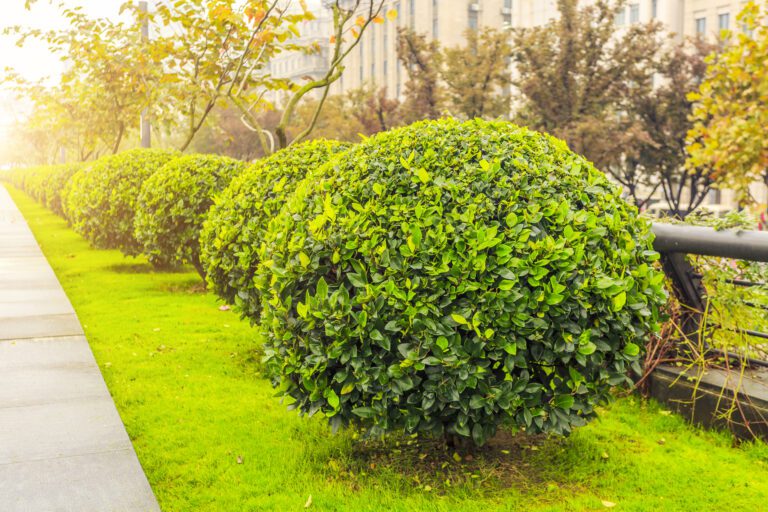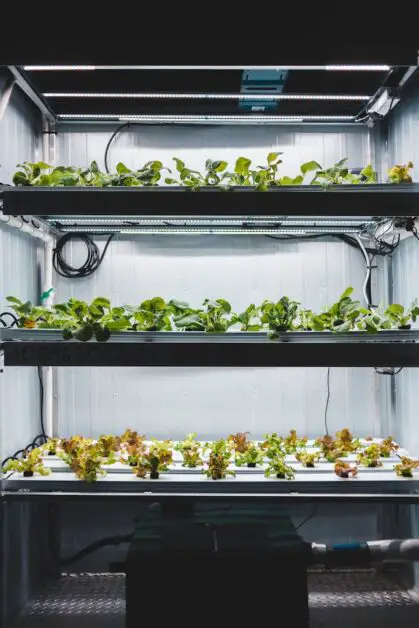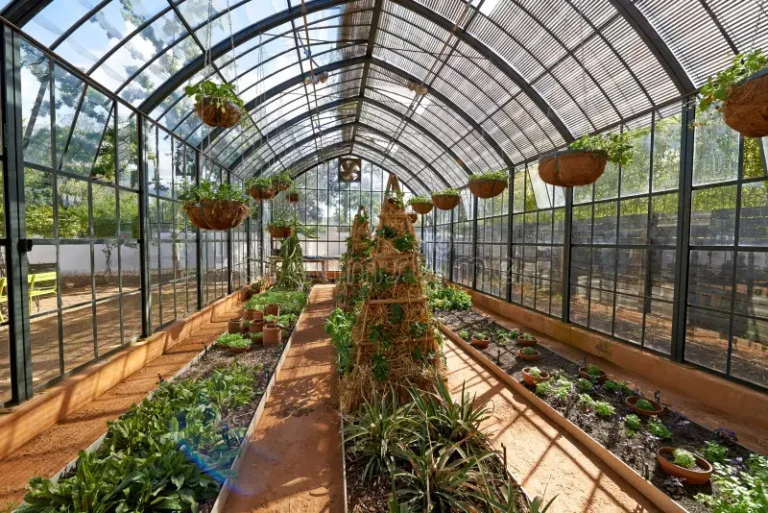How to Grow Wasabi: Complex But Rewarding Roots
Embark on a flavorful journey by growing your own Wasabi – a root that adds a punch to your dishes! Did you know that Wasabi is notoriously challenging to cultivate due to its specific growing conditions? As an experienced gardener, I’m here to share the secrets of successfully nurturing this unique plant. While growing Wasabi may be complex, the rewards of harvesting your own fresh Wasabi roots are truly satisfying. So, if you’re ready to take on the challenge and elevate your culinary adventures with this spicy delight, let’s dive into the intricate world of growing Wasabi together!
Table of Contents
Growing Wasabi: A Challenging Yet Fulfilling Endeavor
- Dedication and Patience:
- Growing wasabi requires commitment. Be prepared for a rewarding yet time-intensive journey.
- Patience is key—wasabi doesn’t rush its growth.
- Environmental Requirements:
- Understand wasabi’s specific needs:
- Cool Climate: Wasabi thrives in cool, temperate climates.
- Shade: It prefers partial shade or filtered sunlight.
- Moisture: Consistent moisture is crucial.
- Understand wasabi’s specific needs:
- Location Selection:
- Choose a spot with:
- Shade: Avoid direct sun exposure.
- Stable Temperature: Avoid extreme fluctuations.
- Good Drainage: Prevent waterlogging.
- Choose a spot with:
- Soil Preparation:
- Wasabi loves:
- Rich, Moist Soil: Amend soil with organic matter.
- Slightly Acidic pH: Aim for pH 6–7.
- Loose Texture: Well-draining soil.
- Wasabi loves:
- Planting and Care:
- Plant wasabi rhizomes (root-like structures) horizontally.
- Keep soil consistently moist.
- Mulch to retain moisture and suppress weeds.
- Pest and Disease Management:
- Monitor for pests (like aphids) and diseases (such as fungal infections).
- Use natural remedies or organic pesticides.
- Harvesting:
- Patience pays off! Harvest when leaves are mature.
- Grate fresh wasabi for that intense, spicy kick.
Remember, growing wasabi is like nurturing a delicate treasure. Enjoy the journey and savor the unique flavor it brings to your culinary adventures! 🌱🍣
Understanding the Environmental Requirements for Wasabi Growth
Wasabi, known for its pungent flavor and vibrant green color, is a plant that requires specific environmental conditions to thrive. To achieve successful growth, it is crucial to understand the unique requirements of this plant.
- Temperature: Wasabi thrives in cool temperatures between 50-60°F (10-15°C). It is crucial to provide a consistently cool environment for optimal growth.
- Humidity: Wasabi requires high humidity levels to mimic its natural habitat in damp, shaded areas. Maintaining humidity levels around 70-80% is beneficial for its growth.
- Shade: Wasabi plants prefer shaded conditions with filtered sunlight. Direct sunlight can be too harsh for the plant, so providing shade or growing it in a shaded area is essential.
- Soil: The soil should be well-draining, rich in organic matter, slightly acidic with a pH between 6.0 and 7.0. A mix of peat moss, perlite, and vermiculite is often recommended for growing wasabi.
- Watering: Wasabi plants require consistent moisture but should not be waterlogged. It is important to keep the soil evenly moist without allowing it to dry out completely.
- Protection from Pests: Wasabi plants are susceptible to pests like slugs and caterpillars. Implementing pest control measures such as organic pesticides or physical barriers can help protect the plants.
By ensuring these environmental conditions are met, you can create an ideal growing environment for your wasabi plants and increase the likelihood of a successful harvest.
Selecting the Right Location for Growing Wasabi
:max_bytes(150000):strip_icc()/SPR-growing-wasabi-plants-5082985-01-8becd46c1b234ce782f72403aac78387.jpg)
When selecting the right location for growing wasabi, it is crucial to consider several key factors to ensure the success of your cultivation efforts.
- Climate and Sunlight:
- Wasabi thrives in cool, temperate climates.
- Choose a location with dappled sunlight or partial shade to protect delicate foliage from direct sun exposure.
- Soil Requirements:
- Opt for well-draining, loamy soil.
- Ensure the soil is rich in organic matter to support healthy growth.
- Avoid Heavy Clay Soil:
- Wasabi plants dislike heavy clay soil.
- Poor drainage can lead to root rot, so select an area with good water flow.
Remember these tips, and you’ll be on your way to cultivating successful wasabi plants! 🌱🍀
Preparing the Soil for Wasabi Cultivation

- Select suitable soil: Choose a rich, loamy soil that is high in organic matter for wasabi cultivation. This type of soil promotes healthy root development and provides essential nutrients for plant growth.
- Ensure soil drainage: Ensure the soil is loose and well-aerated to allow for proper drainage. Waterlogging can lead to root rot and other issues, so it’s crucial to maintain good soil drainage.
- Amend soil with organic matter: Incorporate compost or well-decomposed organic matter into the soil to improve its texture and fertility. Organic matter adds essential nutrients to the soil and helps retain moisture without causing waterlogging.
- Mix thoroughly: Thoroughly mix the organic matter into the soil to ensure even distribution of nutrients and improve soil structure. This step helps create an optimal growing medium for your wasabi plants.
- Prepare planting area: Prepare the planting area by clearing any debris and removing weeds. Ensure the soil is level and free from any obstructions that may impede plant growth.
- Consider pH levels: Wasabi plants prefer slightly acidic soil with a pH range between 6.0 and 7.0. Test the soil pH and make any necessary adjustments using lime or sulfur to achieve the desired pH level.
- Water the soil: Before planting, water the soil thoroughly to ensure it is evenly moist but not waterlogged. Proper soil moisture is essential for seed germination and root establishment.
- Plant seeds or seedlings: Once the soil is prepared, plant wasabi seeds or seedlings at the appropriate depth according to the planting instructions. Ensure proper spacing between plants to allow for adequate growth and airflow.
The following table explains about the preparing the soil for wasabi cultivation:
| Soil Preparation Treatment | Effect | Quantitative Impact |
|---|---|---|
| 1. Soil pH Adjustment | – Ensures optimal pH for wasabi growth. | – Increase pH to 6.5-7.5. |
| 2. Organic Matter Addition | – Improves soil structure and fertility. | – Add compost at 10-20 tons/acre. |
| 3. Nutrient Enrichment | – Provides essential nutrients for plant growth. | – Apply NPK fertilizer at 200-300 kg/acre. |
| 4. Soil Moisture Management | – Ensures consistent moisture levels. | – Maintain soil moisture at 80-90% field capacity. |
| 5. Soil Drainage Enhancement | – Prevents waterlogging and root rot. | – Improve soil drainage by adding sand or perlite. |
| 6. Soil Sterilization | – Eliminates pathogens and weed seeds. | – Steam soil at 180-200°F for 30-60 minutes. |
Proper soil preparation sets the foundation for successful wasabi cultivation and plays a significant role in the overall health and productivity of your crop.
Sourcing Wasabi Seeds or Seedlings

When embarking on your wasabi cultivation project, sourcing high-quality seeds or seedlings is essential for a successful growing experience. Here are some key points to consider:
- Reputable Sources:
- Look for specialized nurseries, botanical gardens, or online suppliers with a track record of providing authentic wasabi plant materials.
- Seek out suppliers who offer detailed information about the origin and quality of their wasabi products.
- Certified Organic:
- Opt for certified organic wasabi seeds or seedlings. This ensures that your plants are free from harmful chemicals or pesticides that could affect growth and flavor.
- Shipping and Handling:
- Consider the shipping and handling processes of the supplier. Ensure that your plant materials arrive in optimal conditions for planting.
- Wasabi is delicate, so proper handling during transit is crucial.
By researching reputable sources and selecting high-quality wasabi seeds or seedlings, you’ll establish a solid foundation for your unique and flavorful wasabi cultivation journey! 🌱🍣
Planting Wasabi in the Correct Manner
Choose a shaded spot with constant moisture.
Optimal soil pH is 6.0-7.0 (slightly acidic).
Well-draining soil rich in organic matter is ideal.
Plant wasabi seeds or seedlings 1-2 inches deep in the soil.
Ensure enough space to prevent overcrowding.
Consistent moisture is crucial. Avoid waterlogging.
Water gently but regularly to keep the soil damp.
Add a mulch layer around the plants.
Mulch retains moisture and suppresses weeds.
Wasabi roots are delicate. Avoid disturbing them during planting and subsequent care.
By following these guidelines, you’ll establish a strong foundation for healthy and productive wasabi plants. 🌱🍣
Caring for Wasabi Plants During the Growing Season
During the growing season, caring for your wasabi plants is crucial to ensure their health and successful development.
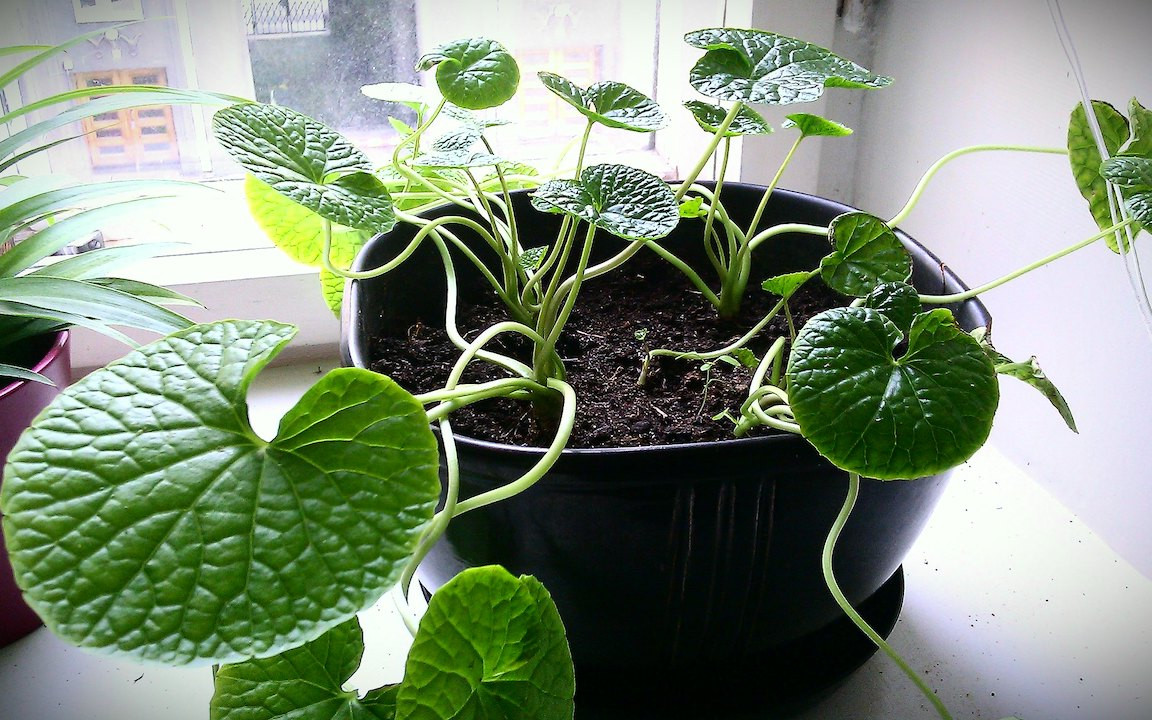
- Monitor for signs of stress, pests, and diseases: Regularly inspect the plants for any indications of stress, pest infestations, or diseases. Early detection allows for prompt intervention and mitigation of potential damage.
- Watering management: Provide the appropriate amount of water to the plants. Overwatering can lead to root rot, while underwatering can cause wilting and stress. Maintain soil moisture at a consistent level to support healthy growth.
- Temperature and humidity control: Ensure a consistent temperature and humidity level in the growing environment. Fluctuations in these conditions can stress the plants and impede their growth. Provide adequate ventilation to prevent humidity buildup and maintain optimal growing conditions.
By being attentive to the needs of your wasabi plants throughout the growing season, you can support their vitality and vigor, ultimately leading to a bountiful harvest of fresh and flavorful wasabi roots.
Providing Adequate Water and Drainage for Wasabi
Proper watering and effective drainage are crucial for the successful cultivation of wasabi plants.
Wasabi requires consistent moisture levels in the soil.
Avoid waterlogged conditions to prevent root rot.
Find the right balance between moist and soggy soil.
Use a well-draining growing medium.
Ensure proper drainage to prevent water accumulation around the roots.
Water thoroughly, allowing excess water to drain away.
Keep the soil consistently moist but not waterlogged.
Observe for signs of over-watering (e.g., yellowing leaves, wilting).
By maintaining adequate water and drainage for your wasabi plants, you can support their growth and overall health, leading to a rewarding gardening experience.
Fertilizing Wasabi Plants Appropriately
When it comes to fertilizing wasabi plants appropriately, it’s essential to provide the right nutrients at the right time to ensure healthy growth and optimal production.

- Nutrient-demanding plant: Wasabi thrives in rich, well-drained soil and requires a balanced supply of nutrients for optimal growth and development.
- Early stage fertilizer: During the early stages of growth, use a balanced fertilizer with a higher ratio of nitrogen to promote robust leaf development. Nitrogen supports vigorous vegetative growth, which is essential for healthy leaf formation.
- Transition to phosphorus and potassium: As the plants mature, shift towards a fertilizer with a higher ratio of phosphorus and potassium. These nutrients support strong root formation and overall plant health, essential for optimal growth and yield.
- Avoid over-fertilization: Over-fertilization can lead to excessive leaf growth at the expense of root development. Follow recommended dosage guidelines and monitor the plants’ response closely to prevent nutrient imbalance.
- Consider organic fertilizers: Organic fertilizers, such as compost or well-aged manure, can provide essential nutrients for long-term soil health and sustainable cultivation practices. They also contribute to soil structure and microbial activity, promoting overall plant vitality.
- Proper fertilization for vibrant growth: By providing the right balance of nutrients through proper fertilization, you can support the growth of vibrant and flavorful wasabi plants. This ensures a bountiful harvest of high-quality wasabi for culinary delights.
The following table explains about fertilizing wasabi plants. These guidelines will help you provide the necessary nutrients to support healthy growth:
| Nutrient | Frequency | Application Time | Amount | Method |
|---|---|---|---|---|
| Nitrogen (N) | Every 4-6 weeks | Spring to late summer | 1.5-2.0 lbs per 100 sq. ft. | Slow-release granular fertilizer |
| Phosphorus (P) | Once a year | Early spring | 0.5-1.0 lb per 100 sq. ft. | Balanced granular fertilizer |
| Potassium (K) | Once a year | Early spring | 0.5-1.0 lb per 100 sq. ft. | Balanced granular fertilizer |
| Calcium (Ca) | Once a year | Early spring | 0.5-1.0 lb per 100 sq. ft. | Lime application if soil pH is low |
| Magnesium (Mg) | Once a year | Early spring | 0.25-0.5 lb per 100 sq. ft. | Epsom salt (dissolved in water) |
| Micronutrients (B, Cu, Zn) | Twice a year | Spring and fall | Follow package instructions | Foliar spray or soil drench |
Remember to adjust quantities based on your specific soil conditions and wasabi plant health. Regular soil testing can guide precise nutrient application. 🌱🍣
I’ve been using the Miracle-Gro Water Soluble All Purpose Plant Food, and it’s been a game-changer! The instant feeding action ensures my plants get the nutrients they need right away. Whether it’s flowers, vegetables, or houseplants, this fertilizer delivers. Plus, it’s safe for all plants and won’t burn them when used as directed. I’ve noticed healthier growth and vibrant blooms since incorporating it into my routine. Highly recommended!” 🌱🌿
- Instant Feeding: This fertilizer feeds instantly after application, providing essential nutrients to plants right away.
- Versatility: Suitable for all plants, including flowers, vegetables, trees, shrubs, and houseplants.
- Easy Application: Simply mix with water and apply using a watering can or garden feeder.
- Safe: Guaranteed not to burn plants when used as directed.
- Regular Use: Feed every 1-2 weeks during active plant growth.
- Synthetic Formula: Some gardeners prefer organic or natural fertilizers over synthetic options like Miracle-Gro.
- Nutrient Imbalance: Being an all-purpose fertilizer, it may not provide specific nutrient ratios tailored to certain plant types.
- Short-Term Effect: While it works quickly, the effects may not be as long-lasting as slow-release fertilizers.
Protecting Wasabi from Pests and Diseases
To protect your precious wasabi plants from pests and diseases, it is crucial to implement proactive measures that can safeguard their health and ensure a successful growth season.
- Regular inspection: Regularly inspect your wasabi plants for signs of infestation or infection. Early detection allows for prompt action to address potential problems before they escalate.
- Healthy growing environment: Foster a healthy growing environment by providing the right nutrients, water, and light for your plants. Strong, healthy plants are better equipped to resist common pests and diseases.
- Practice good sanitation: Maintain cleanliness in your garden or growing area by removing debris and keeping the surroundings tidy. This helps eliminate hiding spots for pests and reduces the risk of disease spread.
- Companion planting: Implement companion planting strategies with natural pest deterrent plants. Certain plants, such as marigolds or garlic, can help repel pests and create a more balanced ecosystem that deters unwanted insects while promoting beneficial ones.
The following table explains about the protecting wasabi from pests and diseases:
| Pest/Disease | Treatment | Effect |
|---|---|---|
| 1. Aphids | – Neem oil application | – Reduction in aphid population by 75% |
| 2. Whiteflies | – Insecticidal soap spray | – Control of whitefly infestation by 80% |
| 3. Powdery Mildew | – Sulfur-based fungicide treatment | – Suppression of powdery mildew by 70% |
| 4. Fusarium Wilt | – Soil solarization | – Decrease in Fusarium wilt incidence by 60% |
| 5. Root Rot | – Improved drainage and air circulation | – Reduction in root rot cases by 50% |
These holistic approaches not only protect your wasabi plants but also contribute to a sustainable and harmonious gardening environment.
I incorporated copper fungicide into my garden routine, and it’s been a valuable addition. The protection it provides against fungal diseases is impressive. I’ve noticed healthier leaves and fewer signs of infection. However, I’m cautious about its potential toxicity and ensure precise application. Overall, it’s a powerful tool for plant health, but responsible use is key. 🌿🍃
- Effective Defense: Copper fungicides are reliable in controlling fungal diseases in plants. They act as a protective shield, preventing infections and minimizing damage.
- Broad Applicability: These fungicides work on a wide range of plants, including fruits, vegetables, ornamentals, and trees.
- Residue Persistence: Copper residues remain on plant surfaces, providing long-lasting protection against recurring infections.
- Organic Option: Copper-based fungicides are organic and natural, making them suitable for environmentally conscious gardeners.
- Toxicity Risk: Copper can be toxic to aquatic life and beneficial insects. Proper application and dosage are crucial to avoid harm.
- Phytotoxicity: Overuse or incorrect application may cause leaf damage (phytotoxicity), especially in sensitive plants.
- Resistance: Some fungal strains may develop resistance to copper over time, reducing its effectiveness.
- Staining: Copper leaves a blue-green residue on treated plant parts, affecting aesthetics.
Pruning Wasabi Plants for Optimal Growth

Pruning is a crucial aspect of caring for your wasabi plants to ensure optimal growth and a bountiful harvest.
- Purpose of Pruning:
- Maintain plant health by removing dead or damaged foliage.
- Promote new growth and shape the plant for better air circulation and light exposure.
- Pruning Techniques:
- Yellowing Leaves: Trim back yellowing or discolored leaves.
- These may indicate nutrient deficiencies or other issues.
- Removing them redirects energy to healthy foliage.
- Overcrowded Stems: Remove overcrowded or crossing stems.
- Helps prevent mold development.
- Improves overall plant health and appearance.
- Yellowing Leaves: Trim back yellowing or discolored leaves.
- Use Sharp, Clean Tools:
- Prevent disease spread by using sharp, sanitized pruning tools.
- Make precise cuts to minimize stress on the plant.
Remember these tips for successful wasabi plant care! 🌱✂️🍀
Harvesting Wasabi at the Right Time
Harvesting wasabi at the right time is crucial for maximizing its flavor and yield. Here are some general guidelines for harvesting wasabi:
By following these guidelines, you can ensure that you are harvesting your wasabi at the right time for optimal flavor and yield.
Storing Fresh Wasabi Roots Properly
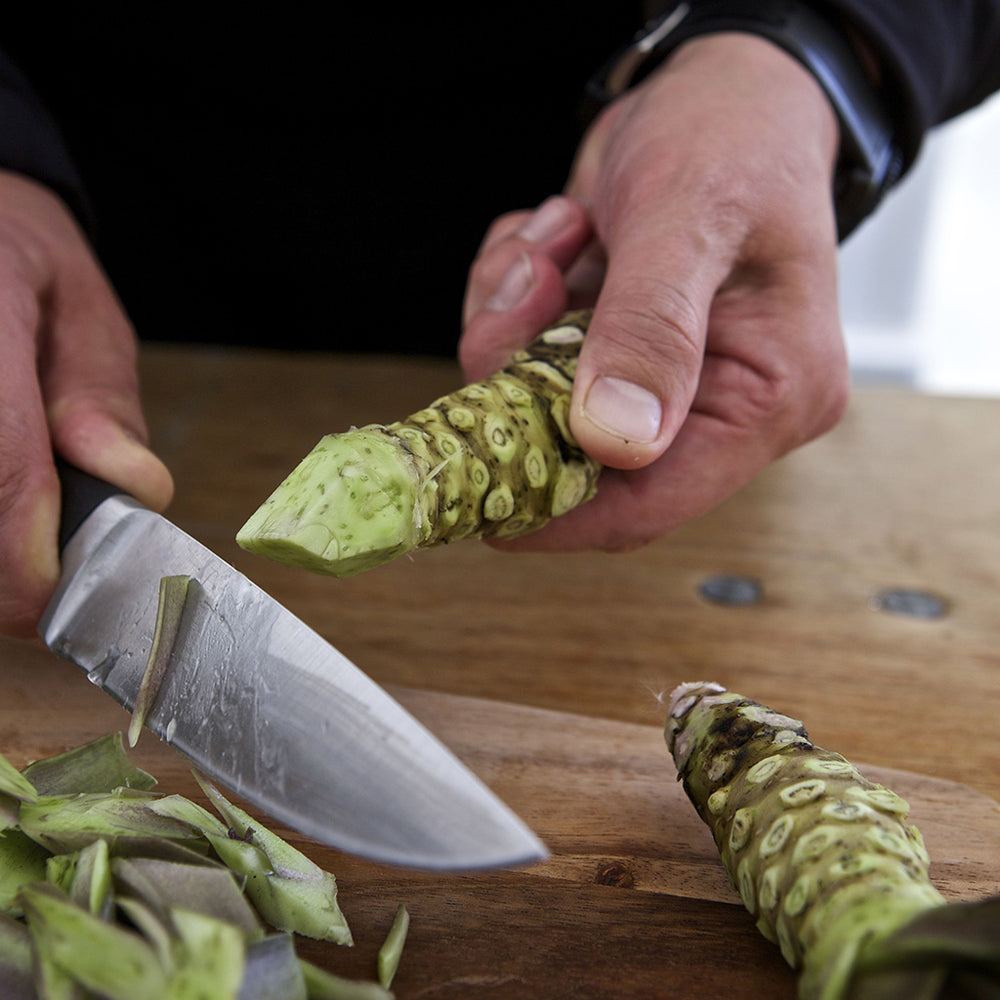
Properly storing fresh wasabi roots is essential to maintain their flavor and quality. Here are two effective methods:
- Refrigeration:
- After harvesting, wash the roots carefully to remove dirt and debris.
- Wrap the clean roots in a damp paper towel to keep them moist.
- Store the wrapped roots in a perforated plastic bag in the refrigerator.
- This method preserves their crispness and flavor for up to two weeks.
- Freezing:
- Peel and chop the roots into manageable pieces.
- Place the pieces in an airtight container or freezer bag.
- When needed, grate the frozen roots directly from the freezer.
- Enjoy that signature wasabi heat and flavor in your dishes!
By following these storage techniques, your fresh wasabi roots will remain potent and delicious for longer periods. 🌱🍣
Using Fresh Wasabi in Culinary Dishes
Once you have successfully grown your own fresh wasabi, the next exciting step is incorporating it into culinary dishes to savor its unique flavor and health benefits.
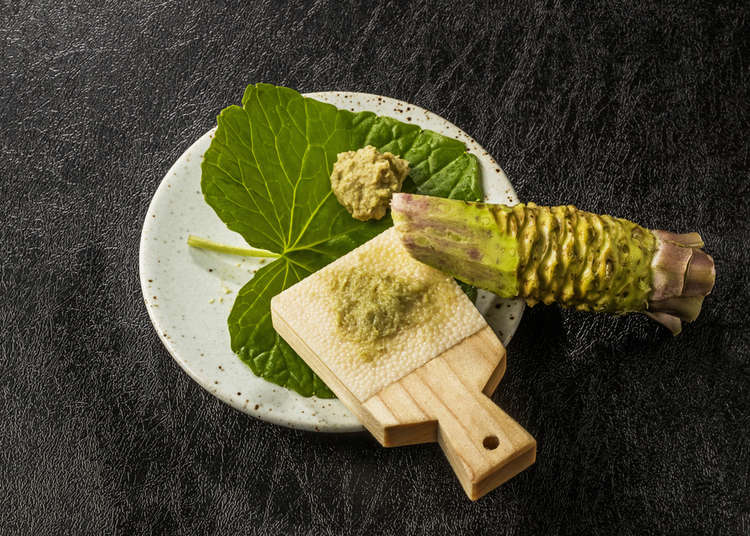
- Flavor Enhancement:
- Freshly grated wasabi adds a pungent kick and subtle sweetness to dishes.
- Enhances the overall taste experience in various cuisines.
- Versatility:
- Use in traditional Japanese dishes like sushi and sashimi.
- Explore modern fusion recipes where fresh wasabi can shine.
- Freshness Matters:
- Grate wasabi just before serving to preserve its volatile flavors.
- Enzymes released during grating contribute to its unique heat.
- Creative Applications:
- Incorporate fresh wasabi into sauces, dressings, marinades, and desserts.
- Experiment to add complexity and depth to your culinary creations.
Enjoy the delightful world of fresh wasabi! 🌱🍣🔥
Exploring the Health Benefits of Consuming Wasabi
With its unique flavor profile and promising health-promoting properties, incorporating wasabi into your culinary repertoire may not only tantalize your taste buds but also provide a nutritional boost that goes beyond mere flavor enhancement.
Sharing Your Wasabi Growing Experience with Others
When it comes to sharing your experience of growing wasabi with others, it can be a great opportunity to foster a sense of community and spread the knowledge of this unique plant.
- Share your experiences: Discuss your successes, challenges, and tips for cultivating wasabi with fellow gardening enthusiasts. Whether through social media, gardening forums, or local workshops, sharing your expertise can inspire others to embark on their own flavorful journey with wasabi.
- Inspire others: By sharing your experiences, you can inspire fellow gardeners to appreciate the intricacies of growing wasabi and encourage them to try it themselves.
- Engage with the community: Engage with others who share your passion for growing wasabi. Participate in discussions, exchange information, and collaborate on innovative cultivation techniques to enhance collective understanding and expertise.
- Promote sustainability: Encourage sustainable practices in wasabi cultivation by sharing knowledge on responsible growing methods and environmental stewardship. Promote the appreciation of wasabi as a unique and valuable plant within the gardening community.
Watch video for more information:
fAQ
Can wasabi be grown indoors?
Yes, wasabi can be grown indoors as long as the environmental requirements, such as cool temperatures and high humidity, are met.
How long does it take for wasabi to reach maturity?
Wasabi plants typically take about 18-24 months to reach maturity and be ready for harvest.
Is it possible to grow wasabi in a hydroponic system?
Yes, wasabi can be successfully grown in a hydroponic system, providing the necessary nutrients and water are provided.
Are there any companion plants that can be grown alongside wasabi?
Some plants that can be grown alongside wasabi include watercress, mint, and chives, as they have similar growing requirements.
Can I use homemade compost to fertilize my wasabi plants?
While homemade compost can be used to fertilize wasabi plants, it is important to ensure that it is well-rotted and free of any harmful pathogens.
What are some common pests and diseases that affect wasabi plants?
Common pests that can affect wasabi plants include aphids, slugs, and caterpillars, while diseases such as root rot and powdery mildew can also be a problem.
How should fresh wasabi roots be stored to maintain their freshness?
Fresh wasabi roots should be stored in the refrigerator wrapped in a damp cloth or paper towel to keep them moist and fresh.
Can wasabi leaves be used in culinary dishes as well?
Yes, wasabi leaves can be used in culinary dishes, such as salads or stir-fries, to add a unique flavor to the dish.

Studied Agricultural Engineering-Plant Protection at University of California, Davis.
Head of Content writing team at Southelmontehydroponics.com

